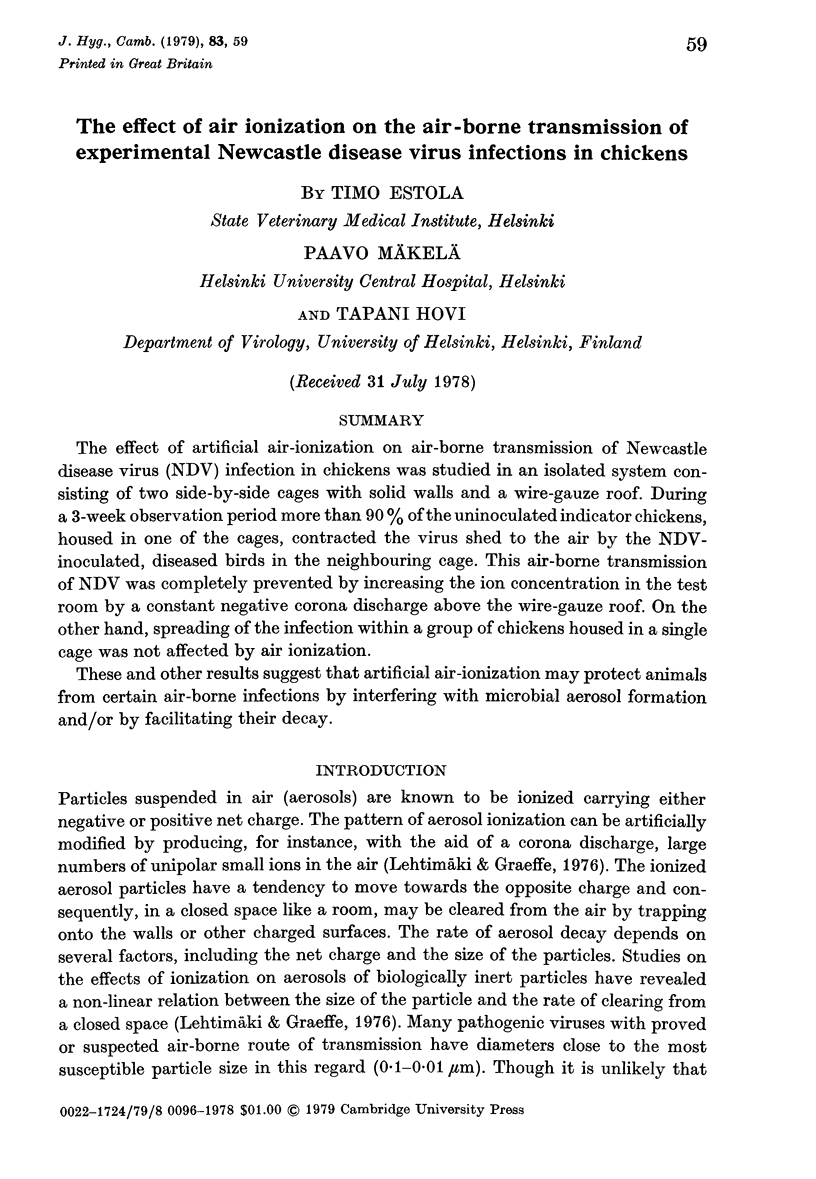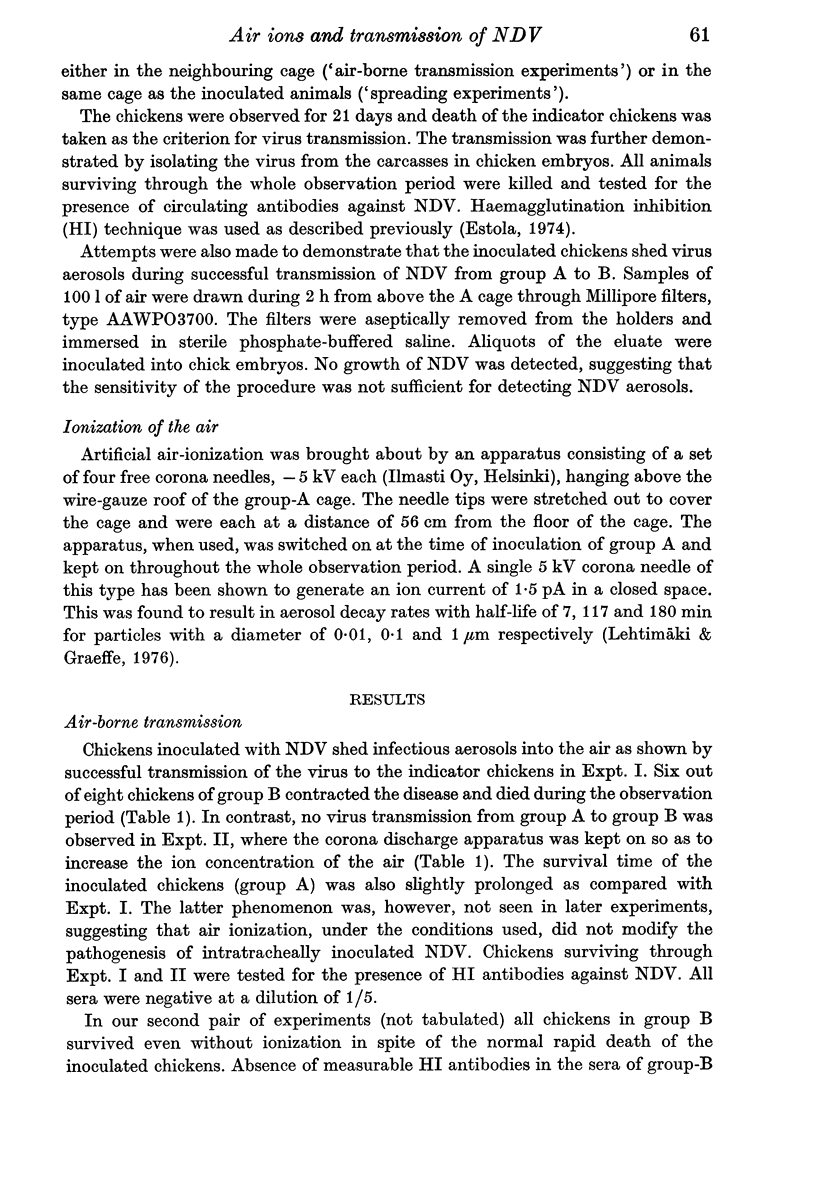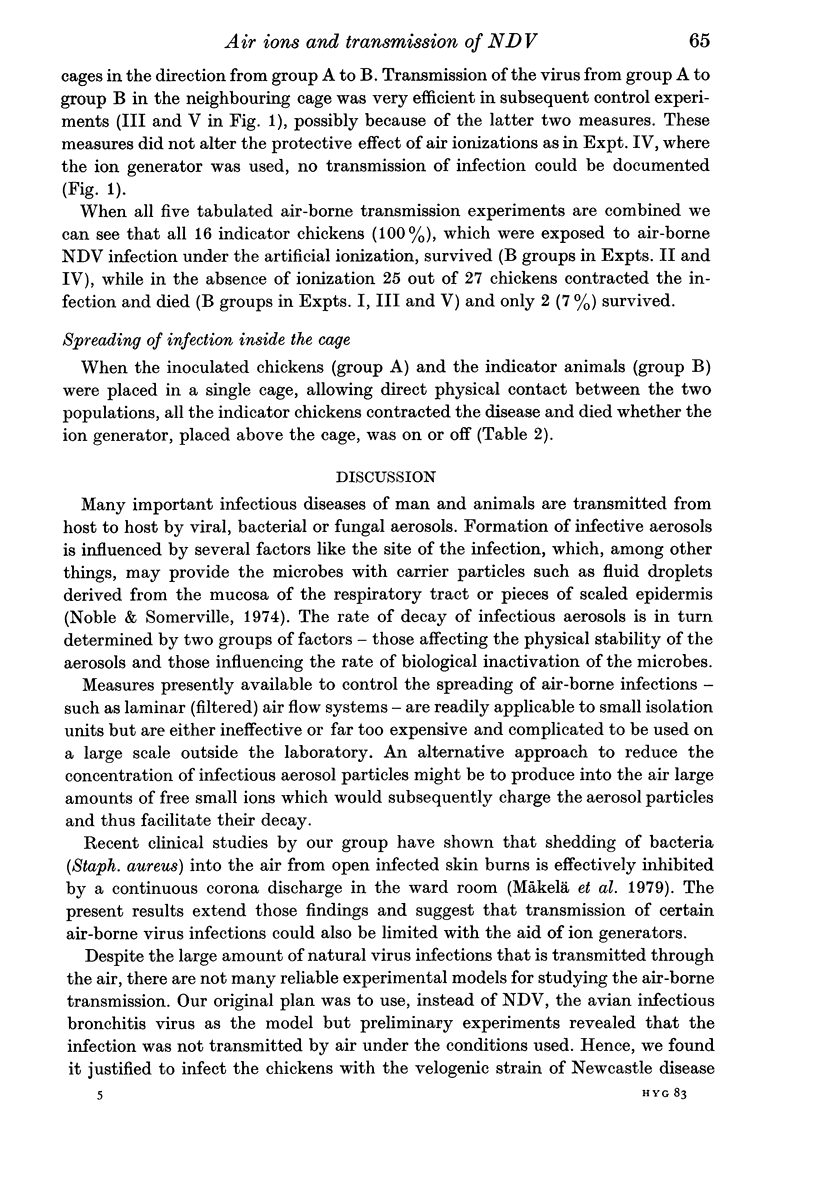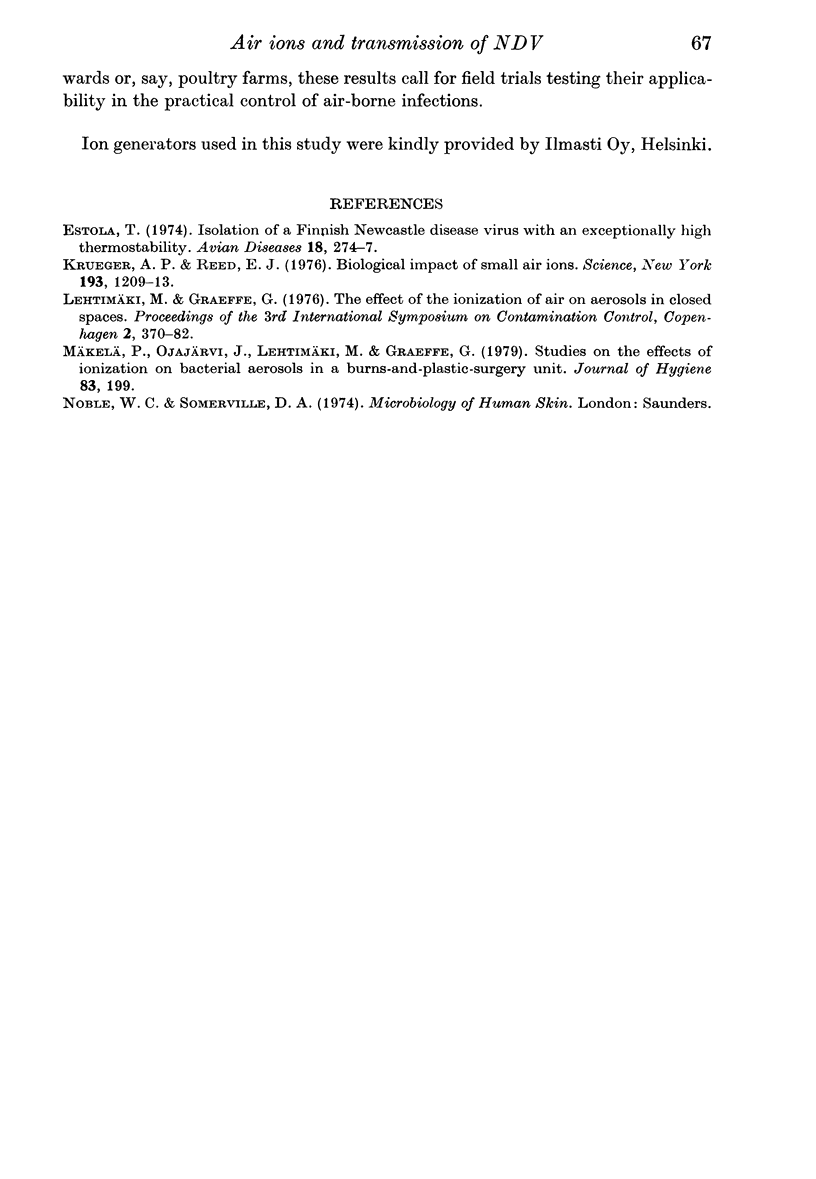Abstract
The effect of artificial air-ionization on air-borne transmission of Newcastle disease virus (NDV) infection in chickens was studied in an isolated system consisting of two side-by-side cages with solid walls and a wire-gauze roof. During a 3-week observation period more than 90% of the uninoculated indicator chickens, housed in one of the cages, contracted the virus shed to the air by the NDV-inoculated, diseased birds in the neighbouring cage. This air-borne transmission of NDV was completely prevented by increasing the ion concentration in the test room by a constant negative corona discharge above the wire-gauze roof. On the other hand, spreading of the infection within a group of chickens housed in a single cage was not affected by air ionization. These and other results suggest that artificial air-ionization may protect animals from certain air-borne infections by interfering with microbial aerosol formation and/or by facilitating their decay.
Full text
PDF








Selected References
These references are in PubMed. This may not be the complete list of references from this article.
- Estola T. Isolation of a Finnish Newcastle disease virus with an exceptionally high thermostability. Avian Dis. 1974 Apr-Jun;18(2):274–277. [PubMed] [Google Scholar]
- Krueger A. P., Reed E. J. Biological impact of small air ions. Science. 1976 Sep 24;193(4259):1209–1213. doi: 10.1126/science.959834. [DOI] [PubMed] [Google Scholar]
- Mäkelä P., Ojajärvi J., Graeffe G., Lehtimäki M. Studies on the effects of ionization on bacterial aerosols in a burns and plastic surgery unit. J Hyg (Lond) 1979 Oct;83(2):199–206. doi: 10.1017/s0022172400025973. [DOI] [PMC free article] [PubMed] [Google Scholar]


